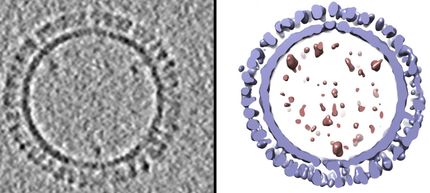Dynavax's Flu Vaccine Shows Immunity to Divergent and Potentially Pandemic Flu Strains in Preclinical Tests
Conjugation of TLR9 Agonists to Conserved Viral Proteins Shows Protection Against 'Antigenic Shift'
Advertisement
Dynavax Technologies Corporation today presented new preclinical data showing that its influenza (flu) vaccine confers immunity to widely divergent viral strains and has potential as a universal flu vaccine. Dynavax's flu vaccine is based on the company's proprietary TLR-9 agonist-based immunostimulatory sequence (ISS) technology and is specifically designed to overcome the limitations of both development-stage pandemic vaccines and standard seasonal flu vaccines.
In preclinical tests in mice, Dynavax's ISS-based flu vaccine has demonstrated the potential to confer cross-protective cellular and antibody-induced immunity against widely divergent flu strains. Results in mice and primates show that co-administration of Dynavax's flu vaccine with standard vaccine enhances the immune response to the standard vaccine, and may allow reduction of dosage while inducing comparable protective immunity. In addition, the enhanced immunogenicity and cross-protection of the Dynavax vaccine may provide immunity that can last for more than one year, potentially enabling the elimination of annual vaccination and stockpiling of vaccine for pandemic use.
"The unique advantage of Dynavax's flu vaccine is our proprietary conjugation technology that chemically links the ISS molecule with highly conserved viral antigens to confer a potent immunogenic and cross-protective effect regardless of the viral strain," said Gary Van Nest, PhD., vice president, preclinical research at Dynavax. "We believe that our flu vaccine represents a potential breakthrough in the prevention of disease caused by serious, widespread viral outbreaks and may be a first line of defense against the event of a flu pandemic. Importantly, the Dynavax approach may offer protection against any potentially pandemic strain, in contrast to other vaccine development efforts that specifically target an individual H5 or other strain. Our goal is to accelerate the completion of preclinical studies and initiate clinical trials of our flu vaccine as expeditiously as possible."
Dynavax's flu vaccine is produced by conjugating ISS with two highly conserved viral proteins, nucleoprotein (NP) and the extracellular domain of matrix protein 2 (M2e). The conjugates can be combined with the standard flu vaccine to confer cross-protective effect and to generate antigens capable of inducing potent immune responses.
In these models, Dynavax's flu vaccine protects against both "antigenic drift" and "antigenic shift." Antigenic drift occurs when there are mutations in HA and NA viral surface proteins, leading to reduced efficacy of vaccines not precisely matched to these mutations. Antigenic shift occurs when there is exchange of genetic material between flu virus subtypes, creating an entirely new and potentially pandemic viral strain.




















































